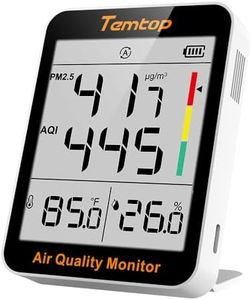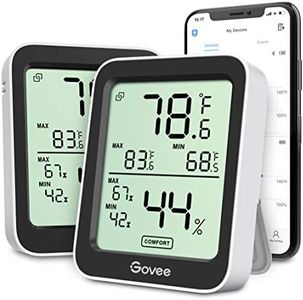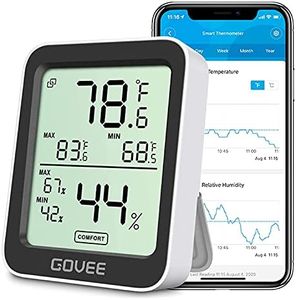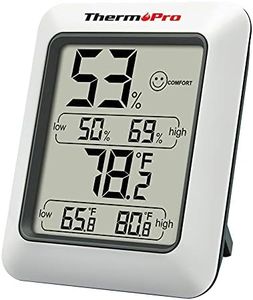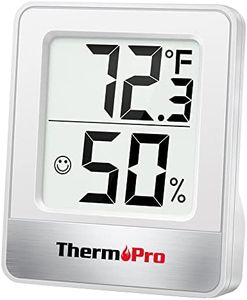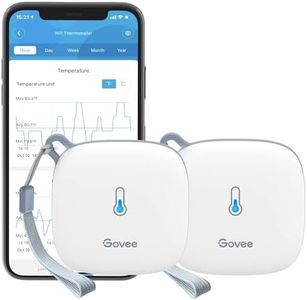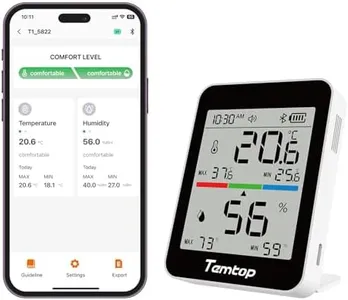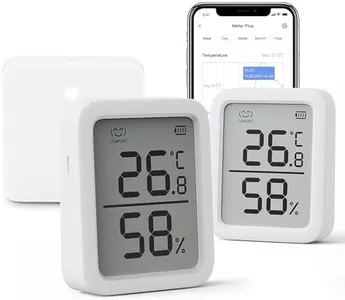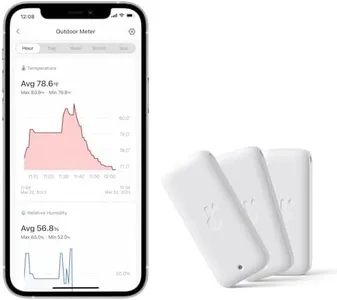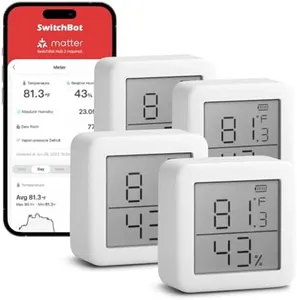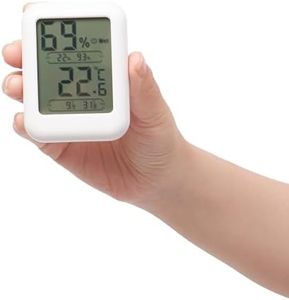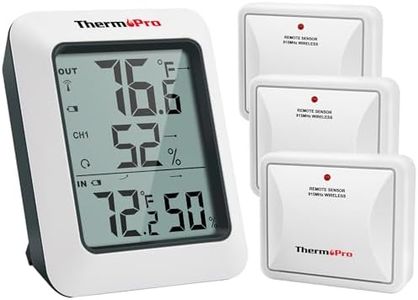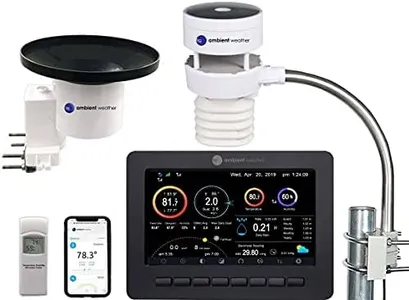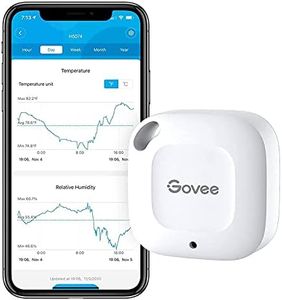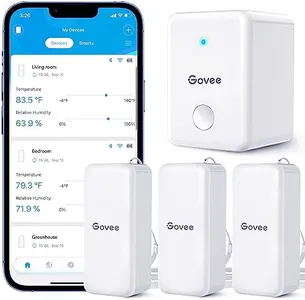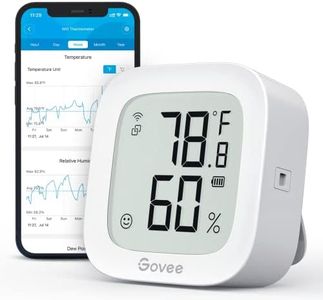10 Best Hygrometers 2025 in the United States
Our technology thoroughly searches through the online shopping world, reviewing hundreds of sites. We then process and analyze this information, updating in real-time to bring you the latest top-rated products. This way, you always get the best and most current options available.

Our Top Picks
Govee Hygrometer Thermometer H5075, Bluetooth Indoor Room Temperature Monitor Greenhouse Thermometer with Remote App Control, Notification Alerts, 2 Years Data Storage Export,LCD
The Govee Hygrometer Thermometer H5075 is a well-rounded device suitable for anyone needing to monitor indoor temperature and humidity, such as homeowners, greenhouse enthusiasts, or those who want to ensure optimal conditions for their plants or wine storage. One of its standout features is its high accuracy, with temperature readings precise to ±0.54°F and humidity to ±3%RH, making it reliable for various applications. The rapid refresh rate of 2 seconds ensures you’re always informed about the latest environmental changes.
The 3-inch bright LCD screen is user-friendly, displaying large numbers and providing max/min temperature and humidity records along with comfort indicators to help you understand the conditions at a glance. Additionally, the smart app integration allows for remote monitoring and notifications, which is particularly beneficial for users who may not always be physically present to check the device.
The reliance on Bluetooth connectivity means that it might not be suitable for larger homes or spaces with thick walls, as the range can be limited compared to Wi-Fi-based devices. Also, while the historical data storage for two years is a great feature, the need for an app to access this data may not appeal to users who prefer a straightforward display.
Customer Highlights
A summary of real customer reviews to highlight what shoppers are saying!ThermoPro TP50 Digital Hygrometer Indoor Thermometer Room Thermometer and Humidity Gauge with Temperature Monitor
The ThermoPro TP50 Digital Hygrometer is a compact and versatile device designed for indoor temperature and humidity monitoring. It boasts high accuracy, with a margin of error of +/-2 to 3%RH for humidity and +/-1°F for temperature, making it suitable for environments requiring precise measurements like greenhouses. The device updates data every 10 seconds, ensuring timely and reliable information on your environment’s conditions.
The display includes an air comfort indicator with icons that show whether the air is dry, comfortable, or wet, providing a quick visual reference for users. Additionally, it records high and low temperature and humidity levels, aiding in tracking changes over time. The multiple placement options (tabletop stand, magnetic back, and hanging mount) make it flexible for use in various settings, including living rooms, baby rooms, kitchens, and offices.
The device does not come with advanced calibration options, which might be a consideration for those needing ultra-precise adjustments. Furthermore, while it is a great general-purpose hygrometer, some users might find its small size less suitable for large spaces where visibility could be an issue. Despite these minor drawbacks, the ThermoPro TP50 remains a highly recommended tool for maintaining healthy indoor environments.
Customer Highlights
A summary of real customer reviews to highlight what shoppers are saying!Buying Guide for the Best Hygrometers
A hygrometer is a device used to measure the humidity level in the air. It is an essential tool for various applications, including maintaining the right environment for musical instruments, wine cellars, greenhouses, and even for personal comfort at home. Choosing the right hygrometer involves understanding several key specifications that determine its accuracy, usability, and suitability for your specific needs.FAQ
Most Popular Categories Right Now
